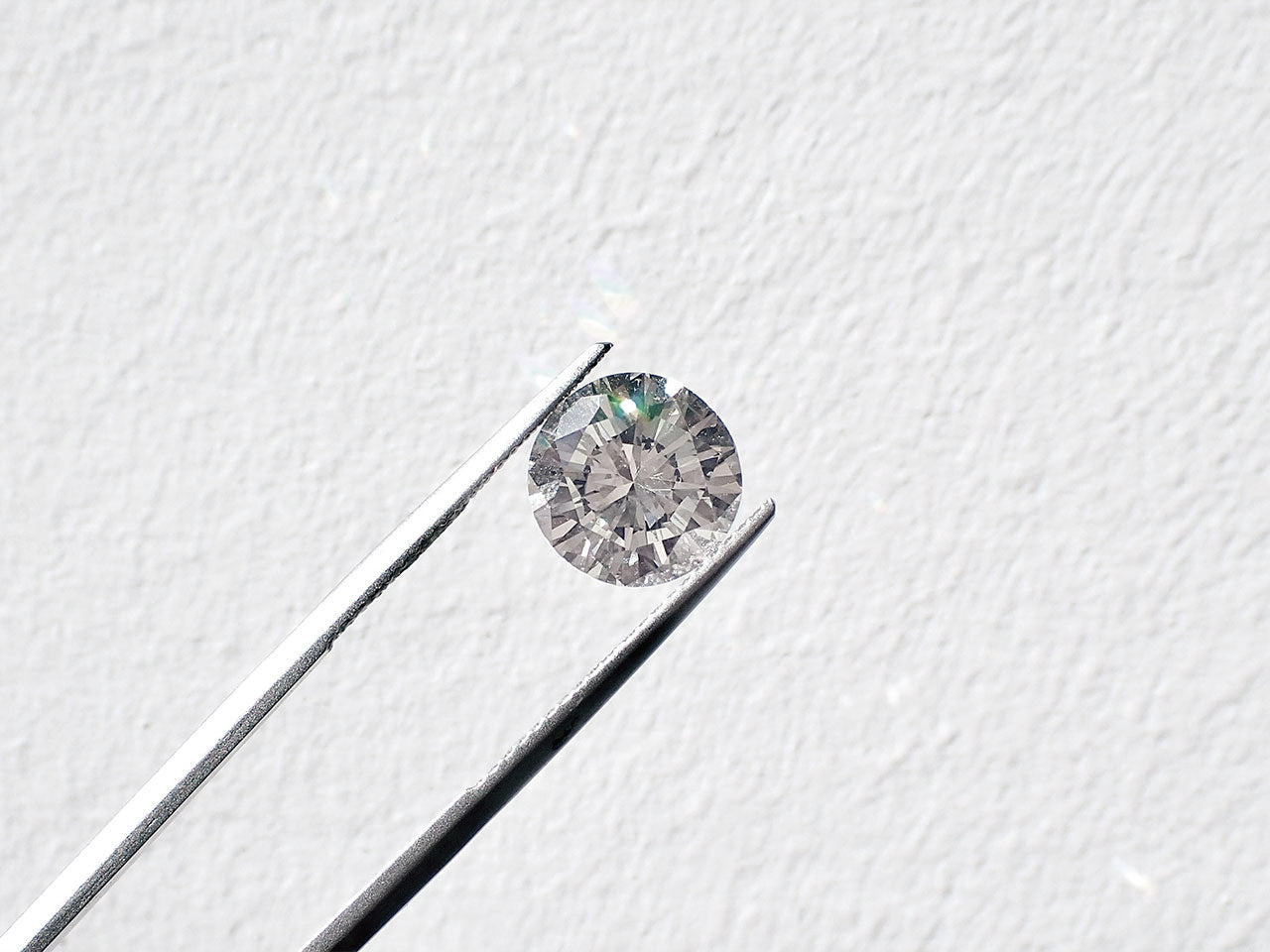Jewelry shopping can be intimidating. That’s why we started Ask Holden, our blog where we answer your FAQs, break down scary industry lingo, and guide you in finding the perfect piece of jewelry.
On the hunt for an engagement ring but don’t want to purchase a mined diamond for ethical or environmental reasons? You might find yourself trying to choose between a lab-grown diamond and a moissanite center stone. While they may look similar, lab grown diamonds and moissanite are completely different.

Today, we’ll start with a short science lesson (break out your lab goggles!) and then compare the two materials based on composition, appearance, and price. We’ll also explain why we prefer and exclusively use lab-grown diamonds here at Holden.
A Primer on Moissanite
Moissanite (pronounced moy-suh-night) was first discovered in an Arizona crater in 1893 by a French scientist named Henri Moissan. Moissan found what he initially thought were microscopic diamond particles caused by a meteorite. However, upon conducting further tests, he realized that these particles were made of silicon carbide rather than pure carbon.
Because natural moissanite is extremely rare (and not found naturally on Earth), all moissanite gemstones today are man-made. Moissanite was first introduced as a synthetic diamond for jewelry purposes in 1998. In addition to its use in jewelry, silicon carbide is also frequently used as an effective semiconductor!
Lab-Grown Diamonds: The Short Version
Let’s start with what makes a diamond: pure carbon put under extremely high pressure and high temperature. For a mined diamond, these conditions occur under the earth’s surface, and for a lab-grown diamond, this happens in a lab. Lab created diamonds are stones that are physically and chemically identical to mined diamonds - they’re real diamonds!
One of the biggest reasons customers opt for lab-grown diamonds is due to ethical concerns about the mining industry. Because it is difficult to trace the origins of a mined diamond, it is hard to know if the stone was ethically sourced. In contrast, lab-grown diamonds are fully traceable from the source, so you can be sure that you are not accidentally purchasing a blood diamond. Learn more about lab-grown diamonds or read about the ethical and environmental impact of mined diamonds.
Moissanite vs Lab Diamonds: Breaking Down the Difference
Composition
As you just learned, the chemical properties of lab-grown diamonds and moissanite are totally different. While both lab-grown and mined diamonds are composed of 100% carbon, moissanite is made of carbon and silica. This means that moissanite is a diamond alternative rather than a real diamond.
One of the ways moissanite and diamonds can be differentiated is that moissanite can change color at temperatures above 1500 degrees Celsius, so jewelers need to be careful when exposing it to high temperatures. Additionally, moissanite shows higher levels of electrical conductivity compared to diamonds.
Hardness
Diamonds are the world’s hardest natural substance, scoring a perfect 10 on the Mohs hardness scale. This means that diamonds are virtually unscratchable (in fact, diamonds can only be cut with other diamonds!). Moissanite scores a 9.25 on the Mohs scale, making it durable but not quite as strong as a diamond.
Sparkliness
To the untrained eye, moissanite and lab grown diamonds look similar, but one of the ways you can differentiate the two is based on the stone’s sparkliness. The biggest visual difference between moissanite and diamonds is that moissanite’s brilliance and dispersion tend to be higher than that of a diamond (which is already a stone known for its sparkle!). In natural light, moissanite can sometimes look like a disco ball full of fiery rainbow flashes - making it possible to distinguish from a real diamond.
Color
As one of the 4 c’s of diamonds, diamond color grading is one of the ways you can differentiate the quality of a diamond. When selecting a stone, you can specify the color of the diamond - a completely colorless stone will be more expensive than a slightly yellow stone.
In contrast, all moissanite stones look nearly the same, and most moissanite has a slight yellow or gray tinge. Because moissanite stones don’t vary in color or clarity, it is not graded based on the 4 c’s - moissanite pricing depends primarily on the size of the stone.
Price
One of the main reasons that shoppers opt for moissanite engagement rings is that a moissanite stone is significantly less expensive than a mined diamond. That said, a lab-grown diamond can serve as a comfortable middle ground, as it’s more expensive than moissanite but still significantly more affordable than a mined diamond. By choosing a lab-grown diamond, you can opt for an ethically sourced, traceable, and affordable stone while still putting a real diamond on your (and/or your partner’s) finger.
Holden's Approach
At Holden, we make rings for your tomorrows and love the romantic notion that diamonds are forever. We want to make tomorrow a better place, which is why we are committed to using ethically sourced, traceable stones for our jewelry. We also use 100% recycled gold and donate 1% of all sales to The Trevor Project, the world’s largest suicide prevention and crisis intervention organization for LGBTQ+ young people.
Questions? Give us a shout at help@hiholden.com or a ring (pun intended) at 646.722.6817.
